Exceptional Results
The Brandeis method of creating science superstars is exquisitely simple: Attract great talent, nurture raw curiosity, provide keen mentorship, and cheer pioneering advances.
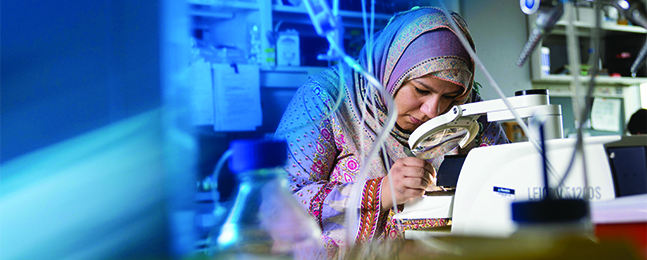
Dan Holmes
by Lawrence Goodman
Over Brandeis’ short 75-year history, an astonishing number of alumni have made consequential scientific discoveries, many receiving the highest accolades in their fields, including the Nobel Prize.
How do they do it? Impressive talent and boundless curiosity are always in the mix, along with persistence, especially in the face of inevitable, sometimes yearslong setbacks.
Drew Weissman, Bonnie Berger, Leslie Lamport, Roderick MacKinnon, Karen Uhlenbeck, and Eve Marder are in the vanguard of alumni scientists who have made discoveries that benefited human health and society, and revolutionized our understanding of nature’s mysteries.
Each of them found the joy of discovery — and self-discovery — at Brandeis.
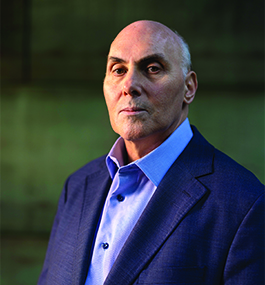
Dan Holmes
Drew Weissman ’81, GSAS MA’81, P’15, H’23
page 2 of 7
‘Trying to understand the unknown’
In 2021, Time magazine hailed Drew Weissman ’81, GSAS MA’81, P’15, H’23, as one of its Heroes of the Year for his research leading to the development of COVID-19 vaccines that have saved millions of lives.
Decades earlier, as a Brandeis undergraduate, he earned both a bachelor’s and a master’s degree in four years by working long hours in the lab of biochemist Gerald Fasman.
“I would bring Fasman results, and he wouldn’t say, ‘Oh, that’s interesting,’” Weissman recalls. “He would say, ‘Well, let’s look and see what these results mean. What can we deduce from them? What kind of hypotheses can we build from these results?’
“What Brandeis did is get me interested in basic science research,” Weissman continues. “I developed a passion for trying to understand the unknown.”
Now the Roberts Family Professor in Vaccine Research at the University of Pennsylvania’s Perelman School of Medicine, Weissman shared the Time honor with his longtime collaborator, Katalin Karikó, H’23. The two met at UPenn in 1997 and began collaborating on using messenger RNA — the molecule that transports instructions from DNA to the ribosomes in our cells, directing them to produce proteins — as the basis for therapeutics and vaccines.
In 2021, they received the Lasker-DeBakey Clinical Medical Research Award, often a precursor to a Nobel Prize.
Yet when Weissman and Karikó started researching mRNA, many scientists doubted it could be used in a vaccine. The skepticism wasn’t without justification. When mRNA was injected into mice, it caused deadly inflammation.
But by the mid-2000s, Weissman and Karikó had figured out a way to modify mRNA so it didn’t cause inflammation. Several years later, Weissman’s lab devised a method of packaging mRNA inside a lipid nanoparticle — a small bubble of oil — so the molecule didn’t fall apart as it traveled through the body. “We basically tested every possible delivery system and found this was the best,” Weissman says.
By the 2010s, Weissman’s lab had shown that mRNA was effective as a delivery vehicle for immunizing mice against genital herpes, influenza, Zika, and HIV.
Weissman’s basic-science research will undoubtedly continue to transform medicine. “We’re working,” he recently told Penn Medicine News, “on every imaginable infectious disease.”
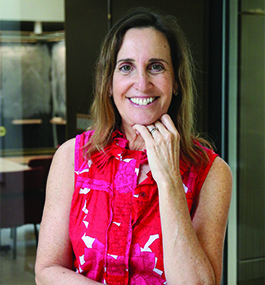
Allegra Boverman
Bonnie Berger ’83
page 3 of 7
‘The solutions just clicked’
Mathematician Bonnie Berger ’83 says her lightbulb moment came during her sophomore year.
She was sitting at a computer terminal in Ford Hall, coding in FORTRAN, one of the earliest programming languages. “It just came so easily to me,” she says. “I thought, ‘Aha! I’ve found what I love.’”
Berger, the Simons Professor of Mathematics at MIT, and a member of both the National Academy of Sciences and the American Academy of Arts and Sciences, is one of the world’s foremost experts in computational biology, the application of computer science and math to biology.
She’s used code-breaking strategies to reveal protein structures, applied machine learning and big data to drug discovery, and invented a computational tool called Dig that identifies genetic mutations in cancer cells before they turn tumorous. “I view biology as providing me problems as a mathematician,” she says.
Her father, a Miami businessman who dreamed of being a mathematician, used to slip notes under her bedroom door that read, “Good morning, Bonnie! Would you like to do math problems today?”
She started Brandeis as a Russian language major, then switched to psychology during her second year. She didn’t have much interest in diagnosing mental illness or analyzing graffiti on a bathroom wall (an observational experiment assigned in one class), but she did love any assignment involving programming. In her junior year, she changed her major to computer science.
“I could see how to lay out a program,” she says. “The solutions just clicked in my brain.”
She got 11 A-pluses in her math and computer science classes. One summer, she designed the university’s first online course-registration system for the registrar’s office.
Although there weren’t many female faculty or students in the computer science department at the time, Berger says she never encountered sexism.
“I was appreciated for my brain,” she says. “There were never any issues with gender.” And faculty members encouraged her to pursue an advanced degree after graduation.
“Brandeis helped me find myself,” she says. “It finds hidden jewels.”
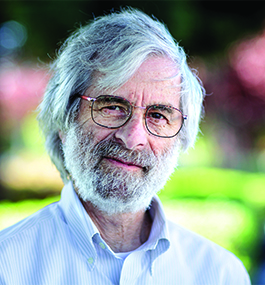
Leslie Lamport, GSAS MA’63, PhD’72, H’17
page 4 of 7
‘I was worth trying to help’
Computer scientist Leslie Lamport, GSAS MA’63, PhD’72, H’17, never thought mathematics was rigorous — until he came to Brandeis.
Geometry proofs that relied on pictures felt like sleight of hand. Even calculus struck him as analytically deficient.
Then he took a class with Richard Palais, now a professor emeritus of mathematics. Palais approached calculus with a thoroughness he’d never seen before. “Dick made me realize that if I understood any math, I could reason completely rigorously about it,” Lamport says.
Lamport went on to develop brilliant algorithms using the mathematical approach he learned at Brandeis. In a series of papers starting in the 1970s, he devised the mathematical formulas that undergird distributed computer networking, the process whereby multiple computers talk to one another without relying on a coordinating central computer.
These formulas are among the algorithms that run the World Wide Web. Distributed networking allows millions of computers to share data, perform computations, and make decisions, without the time-consuming process of calling into a central node for instructions. It also ensures the system can keep going if any computers fail.
As pioneering computer scientist Robert Taylor has said, “You like using the internet, you owe Leslie.”
In 2013, Lamport received the A.M. Turing Award, computer science’s Nobel Prize.
Now a distinguished scientist at Microsoft Research Lab, Lamport says he is especially grateful to Brandeis’ math department for an act of faith: It accepted him back after he dropped out.
Shortly after earning his master’s, Lamport left to study music and, for several years, taught math at a small Vermont college. He eventually realized math was for him after all. “Brandeis realized I was very smart, and I was worth trying to help,” he says.
For the past 25 years, Lamport has worked on developing a system of tools and techniques for computer programming called TLA+ (Temporal Logic of Actions). It asks programmers to create an outline, expressed in mathematical theorems, that explains what the software program will do and how it will do it.
In many ways, it requires them to employ the same analytical rigor Lamport discovered at Brandeis.
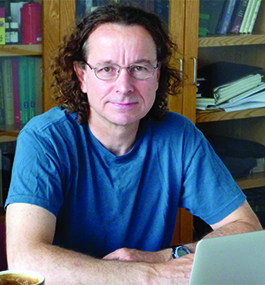
Courtesy The Rockefeller University
Roderick MacKinnon ’78, H’05
page 5 of 7
‘Science was more intellectually stimulating’
In 1986, Roderick MacKinnon ’78, H’05, faced a professional crisis. He’d gone to medical school, and practiced medicine as an intern and a resident for three years. And he’d discovered he didn’t want to be a doctor.
“Medicine was interesting,” he says he realized. “But science was more intellectually stimulating.”
He went to see his undergraduate mentor, biochemistry professor Christopher Miller, for advice. It was in Miller’s lab that MacKinnon, as a junior, began the research that would eventually earn him the 2003 Nobel Prize in Chemistry.
Miller told MacKinnon he could rejoin his lab as a postdoc, an offer MacKinnon eagerly accepted.
“Chris’ enthusiasm was infectious,” MacKinnon says. “He was clearly having fun. When things got you down, he’d say, ‘Be a happy warrior.’”
Several years later, MacKinnon moved to Harvard, then to The Rockefeller University, where he is now the John D. Rockefeller Jr. Professor, directing a molecular neurobiology and biophysics lab. He’s also a Howard Hughes Medical Institute Investigator.
He won the Nobel for work that revealed the structure of ion channels, openings in cell membranes that enable ions (atoms or molecules with an electrical charge) to flow in and out of cells. The channels are critical for transmitting electrical signals between nerve and muscle cells, and regulate a raft of physiological processes, from muscle contractions to heartbeat.
When MacKinnon worked with Miller as an undergrad, Miller had only recently arrived at Brandeis. His lab consisted of one technician (and Miller’s dog made regular appearances). As a result, MacKinnon got to do advanced work and handle research tasks typically assigned to graduate students.
“Rod had this amazing intelligence,” Miller says. “What arose from it was not ambition for fame and riches, but a raw curiosity about how nature works, this broad scientific intellectualism.”
At the time, Miller’s research focused on the selectivity of ion channels — specifically, why they let in potassium molecules while forbidding entry to sodium molecules. When MacKinnon returned as a postdoc, Miller was looking at why a molecule found in scorpion venom blocked ion-channel passage. He had a hunch the venom acted like a cork in a bottle. MacKinnon helped prove him right, which in turn helped researchers understand how ion channels selectively filter the flow of potassium.
MacKinnon eventually determined the three-dimensional structure of the potassium ion channel. His recent work focuses on how mutations in ion channels lead to a wide range of diseases, including neurological and cardiovascular disorders.
“Brandeis was a really good place for me,” MacKinnon says. “Had I not had that experience with Chris Miller, who knows how my life would have turned out.”
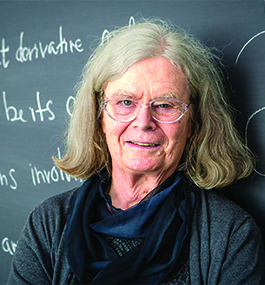
Karen Uhlenbeck, GSAS MA’67, PhD’68, H’08
page 6 of 7
‘The best option’
“My decision to enter graduate school at Brandeis University was one of the best of my career,” says mathematician Karen Uhlenbeck, GSAS MA’67, PhD’68, H’08.
Uhlenbeck, an emeritus professor at the University of Texas at Austin and Distinguished Visiting Professor at the Institute for Advanced Study, in Princeton, New Jersey, pioneered the fields of modern geometric analysis and gauge theories, used to describe the behavior of subatomic particles.
In 2019, she became the first woman to win the Abel Prize, awarded by the Norwegian Academy of Science and Letters, and considered the Nobel Prize for mathematics.
Uhlenbeck has also been a lifelong advocate for women in the field of mathematics, and co-founded the Women and Mathematics Program at the IAS to address the field’s gender imbalance.
Growing up in Cleveland, she was a voracious reader but didn’t discover her passion for math until college. “The structure, elegance, and beauty of mathematics struck me immediately, and I lost my heart to it,” she wrote in an essay for the 2009 book “Mathematicians: An Outer View of the Inner World.”
When she was ready to pursue an advanced degree, she looked for a university that was hospitable to women, who were radically underrepresented in the field at the time.
“I was fearful of the attitude toward and the treatment of women at the more elite, established PhD programs at Harvard and MIT,” she says. “The faculty in mathematics at Brandeis were young and had not been directing exclusively male graduate students for decades. It seemed like the best option.”
Like Lamport, she studied with Richard Palais, who was working in a branch of mathematics called global analysis. (She also took up swimming at Brandeis, which became a lifelong habit.)
After graduating and entering the job market, she was frequently told women belonged at home, having babies, a very different attitude than she encountered as a PhD student.
“At Brandeis, I benefited immensely from the combination of an enlightened attitude toward women and an introduction to cutting-edge mathematical research,” she says. “Few students have been so lucky.”
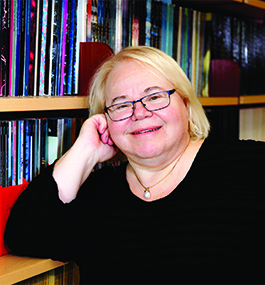
Mike Lovett
Eve Marder ’69
page 7 of 7
‘I felt I could be myself’
Pioneering neuroscientist Eve Marder ’69 joined the Brandeis faculty as an assistant professor in 1978. She has never left.
“I have stayed at Brandeis largely because of my colleagues,” she wrote in 2016 in an autobiographical essay. They “share a belief that the creation of new knowledge is one of the most important of human endeavors.”
Marder, the Victor and Gwendolyn Beinfield Professor of Neuroscience, and a University Professor, has revolutionized scientists’ understanding of neuronal circuit operation, including how neuromodulators, chemicals that alter the activity of neurons, affect an organism’s behavior. She studies a small network of 30 neurons in the nervous system of lobsters and crabs, which she realized early in her career could serve as a model for understanding the basic properties common to all brains.
She has received numerous prestigious prizes in neuroscience, including the Gruber Prize, the Kavli Prize, and the National Academy of Sciences Award.
In her 2016 essay, Marder remembers doing her first scientific experiment as a kid at a playground, when she wondered whether her head would fit through some railings. Though she got stuck and “felt unbelievably stupid,” it was a revelatory moment nonetheless: “I date this as my first self-conscious awareness of myself as a critical decision-making person.”
Marder discovered her passion for neuroscience as a Brandeis undergraduate when a psychology professor mentioned schizophrenia might be biologically based, the result of electrochemical signals being inhibited in the brain. “I went to the library and read everything I could about inhibition,” she recalled in an interview with the Gruber Foundation. “That’s when I decided to become a neuroscientist.”
When Marder joined the Brandeis faculty, women made up about a third of the biology department. “There was a commitment to social justice and the sense that they didn’t discriminate,” she says. Plus, “Brandeis faculty were always a little bit quirky, so I felt I could be myself.”
In 1981, Marder was eating lunch outside on campus when her newspaper sailed away on a gust of wind. Psychology professor Art Wingfield retrieved it for her. A few months later, they moved in together and eventually married.
Brandeis is also where she met physicist Larry Abbott, GSAS PhD’77. Together, they developed the dynamic clamp, a device now used worldwide to study neurons and neural circuitry.
Over the years, Marder has mentored dozens of scientists. She’s been an especially vocal advocate for women in her field. Her office is adjacent to her lab, and she keeps her door open, even though this invites interruption — she wants to be available to colleagues and students.
She has no plans to retire. “Peeking into the mysteries of life,” she wrote in her 2016 essay, “never gets old.”
